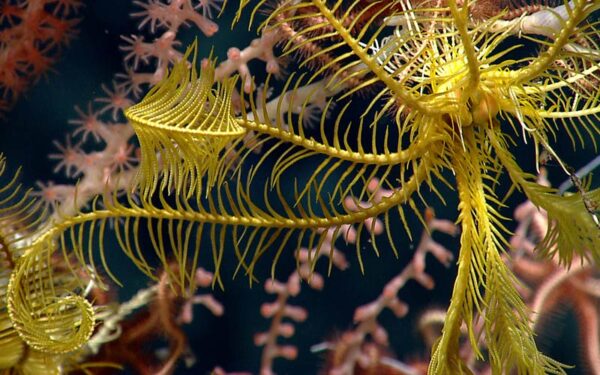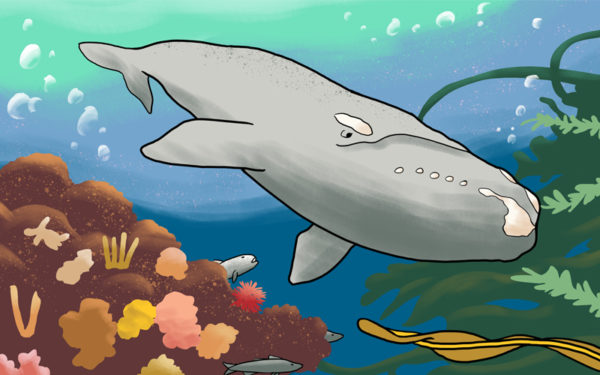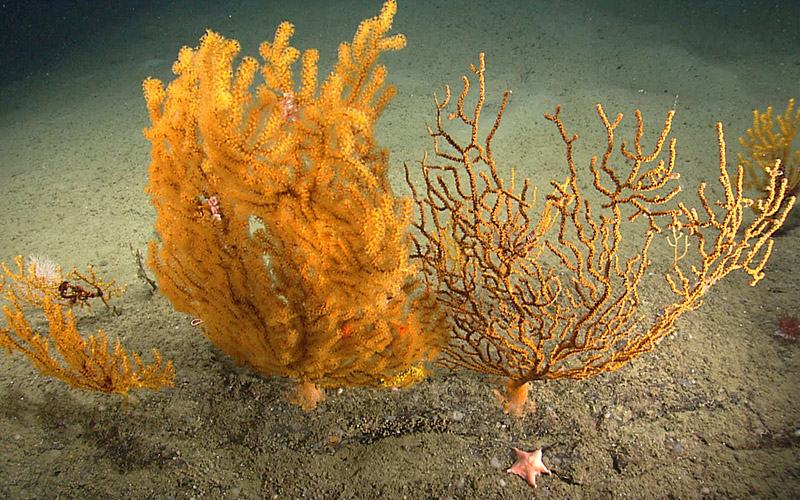
A deep-sea coral in the Northeast Canyons and Seamounts Marine National Monument. The monument is celebrating its second anniversary this weekend, even as the Trump administration threatens to roll back its protections. Photo: Anderson Cabot Center for Ocean Life at the New England Aquarium
Happy Anniversary! This Saturday, September 15, marks two years since President Obama designated the Northeast Canyons and Seamounts Marine National Monument, providing full and permanent protection of this remarkable ecosystem for generations to come.
Less than 150 miles off the shores of Cape Cod, the Northeast Canyons and Seamounts National Marine Monument is the only area in the U.S. Atlantic that’s fully protected from industrial activity. Free from these threats, a rich diversity of ocean wildlife – from vibrant deep-sea coral and dense schools of fish to pods of dolphins, porpoises, and whales – thrive within its boundaries.
CLF advocated for the monument’s creation, and now, we’re fighting to keep it safe. For almost as long as he has been in office, President Trump has led an attack on our public lands and waters, trying to reverse protections for our most special places – including the Canyons and Seamounts. The Antiquities Act, one of our nation’s most important conservation tools that allows presidents to designate national monuments, is also under attack by the Trump administration and Congress.
It’s critical that the Northeast Canyons and Seamounts Marine National Monument – encompassing three spectacular canyons deeper than the Grand Canyon and four extinct underwater volcanoes – remain fully protected and that the Antiquities Act remains intact.
In celebration of the monument’s second birthday, here are three of the quirky creatures that live in – and are protected by – the Northeast Canyons and Seamounts.
Sperm Whales
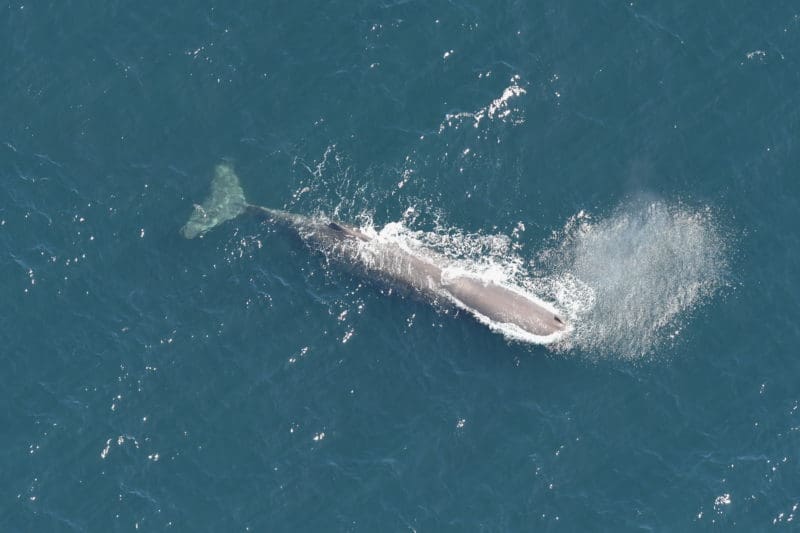
Photo: Anderson Cabot Center for Ocean Life at the New England Aquarium
Sperm whales are endangered, with only about 2,300 of them remaining in the North Atlantic. But they find refuge in the monument, away from harmful commercial fishing gear that can entangle and kill these iconic whales.
Sperm whales are usually in the monument during their calving season, which runs from July to November. This critical time makes the monument’s protection even more important for their survival.
The whales also feed in monument, including hunting for giant squid. To catch them, sperm whales hold their breath between 30 and 60 minutes and dive over 3,000 feet.
Because sperm whales sit at the top of the food chain, they rely on the health of all the species below them. The monument protects a whole ecosystem, maintaining biodiversity that’s good for whales – and all the other species living in the monument.
Ocean Sunfish
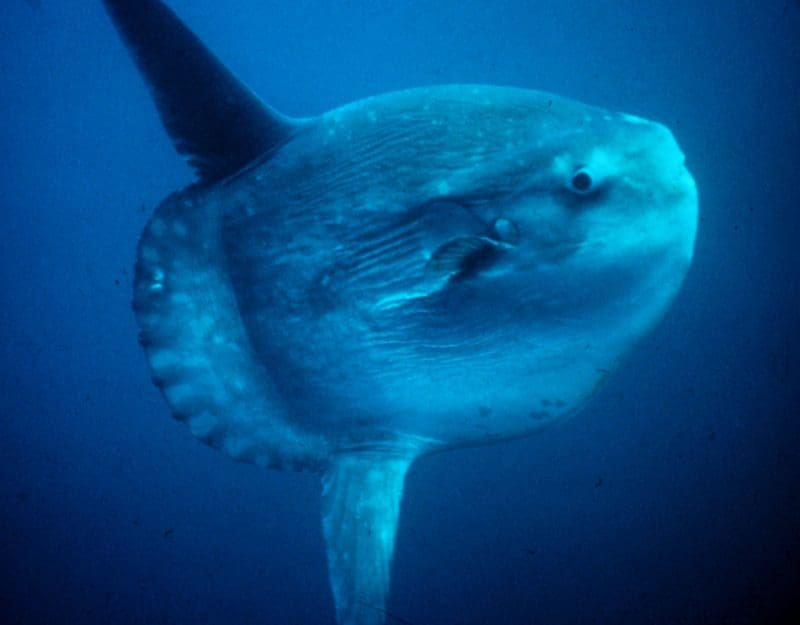
Photo: NOAA
With a slimy, disc-shaped body, rudder-like tail, and elongated fins, the sunfish looks awkward and incapable of maneuvering. But despite a strange body that looks like the back half was forgotten, the sunfish is an adept swimmer, moving its 2,000-plus-pound body across vast swaths of the ocean.
During surveys of the monument, sunfish are often spotted resting on their sides at the water’s surface, basking in the sun to warm up after a dive – this is how they got their name. When they aren’t soaking up the sun, they dive deep into the canyons to feed on jellyfish.
Because sunfish are bulky and spend so much time near the surface, they frequently get entangled in fishing nets or hooked by fishing lines. The International Union for Conservation of Nature and Natural Resources has listed sunfish as vulnerable to extinction.
The only permanent place in the Atlantic Ocean that protects sunfish from commercial fishing is in the Northeast Canyons and Seamounts National Marine Monument.
Basking Sharks
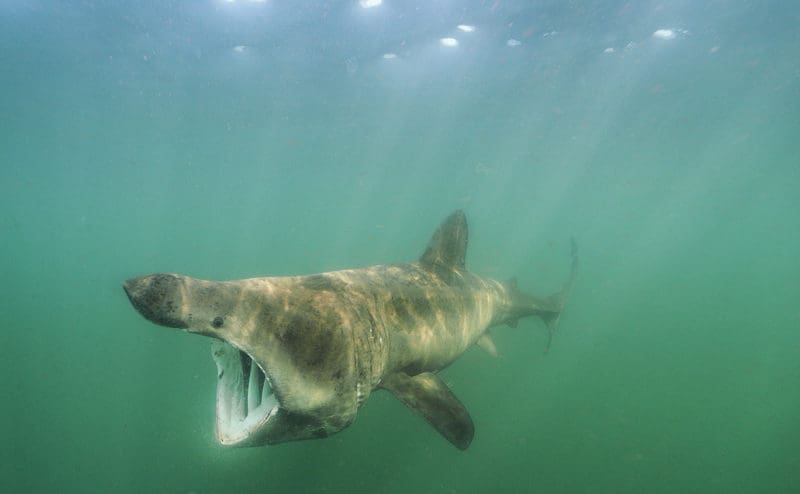
Photo: Brian Skerry
Basking sharks are the second-largest species of fish in the world. They can grow as long as 32 feet and weigh more than five tons. Although they may look threatening with their mouths open wide, they’re only looking for plankton. The tiny krill are their primary food – this isn’t a “Jaws” situation.
These gentle giants of the ocean call the cool waters of the monument home during the summer, then migrate south for the winter, often as far as Florida.
And like sperm whales and sunfish, their populations around the world are dwindling. For centuries, basking sharks were caught for their oil, skin, and fins. Today, basking sharks in the Atlantic are protected from exploitation, and refuges like the Northeast Canyons and Seamounts may well prove essential to their long-term survival.
Celebrating the Canyons and Seamounts, Today and in the Future
The Northeast Canyons and Seamounts National Marine Monument is a biodiversity hotspot right in our backyard. We’re excited to celebrate our monument’s second birthday this weekend – and many more to come.
Want to help ensure the future of the Canyons and Seamounts? Sign our action alert to tell your legislators to defend our marine monument.
Isaac Schuchat contributed to this piece.


